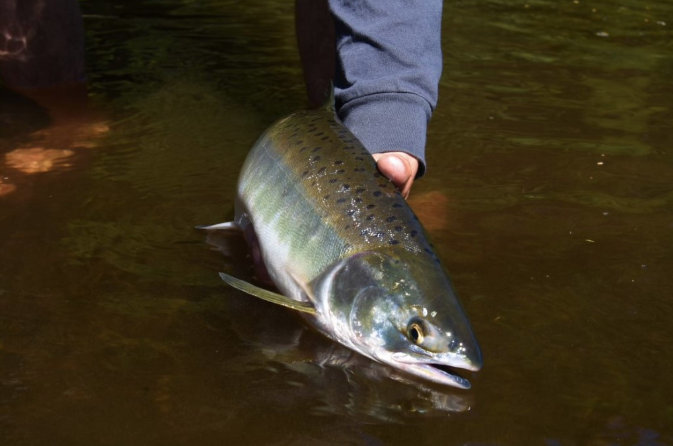The Tongass National Forest is often referred to as America’s Salmon Forest because the entire ecosystem depends on salmon in one way or another.
Salmon can be traced all the way to the trees, and the cycle runs full circle. Animals that feed on salmon drag the carcasses into forest, effectively applying thousands of pounds of organic fertilizer to the trees. Without trees to shade the streams and provide underwater structure, salmon would not have proper habitat to mature and later spawn. Salmon DNA can be found within the trees.
There is no other place like the Tongass. In order to protect the Tongass’ rich biodiversity, Trout Unlimited worked with various groups, stakeholders, and the U.S. Forest Service to create the Tongass 77—the designation of 77 watersheds chosen for their outstanding salmon habitat and economic value. These watersheds were selected for protection so their main use can be fish production as opposed to logging, mining and other types of development.
Once the 77 watersheds were chosen, the Forest Service made the selected watersheds off limits to old-growth logging. On top of this, the initiative addresses problems such as “red pipes,” or fish-migration barriers. Red pipes are anything from improperly sized culverts or steep gradients.
Many restoration projects have occurred within the Tongass 77 to ensure future success for salmon. Salmon are already facing many problems in the ocean, so it is imperative to make sure that they have proper spawning and maturing habitat.
I have been lucky enough to spend more than a week in the Tongass National Forest, and this place is truly incredible. I have stood among trees that have been around for hundreds of years as well as fresh clear cuts. This has inspired me to work toward protecting such a unique ecosystem. Learning about the Tongass and being able to catch some of the fish that spawn in its streams has made this forest incredibly special to me, and my time in the Tongass has given me a new respect for organizations like Trout Unlimited.
We must take action to protect our watersheds to ensure that salmon can return each year and keep the Tongass alive.



